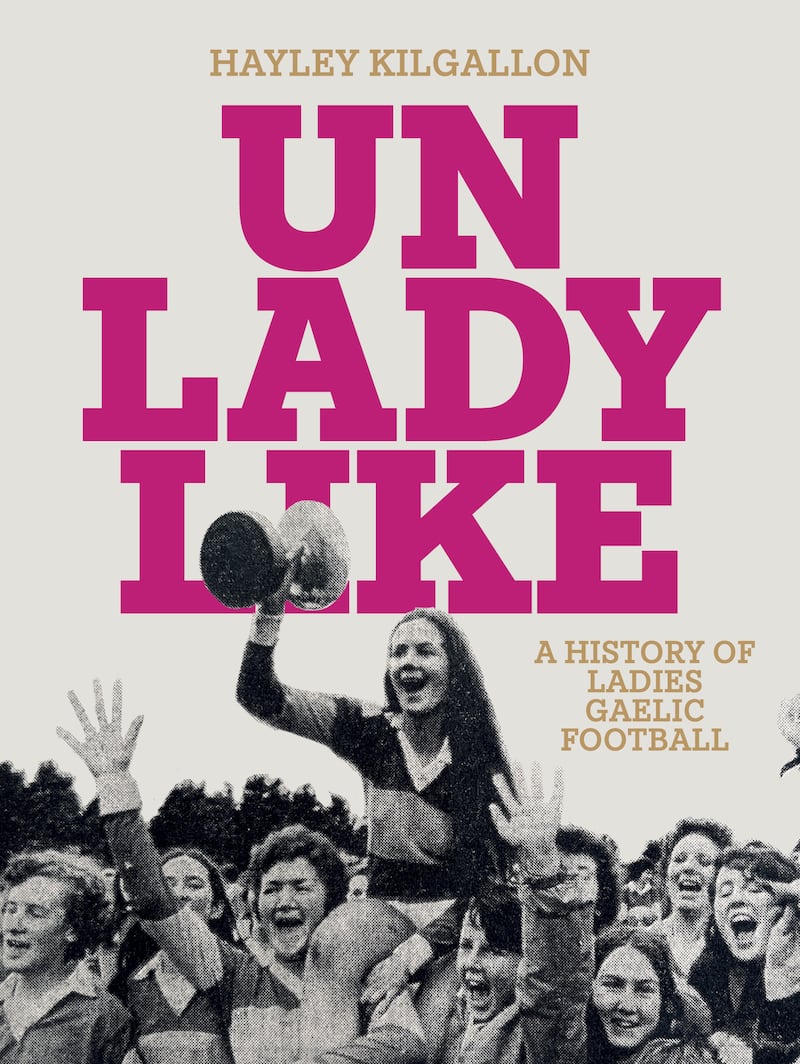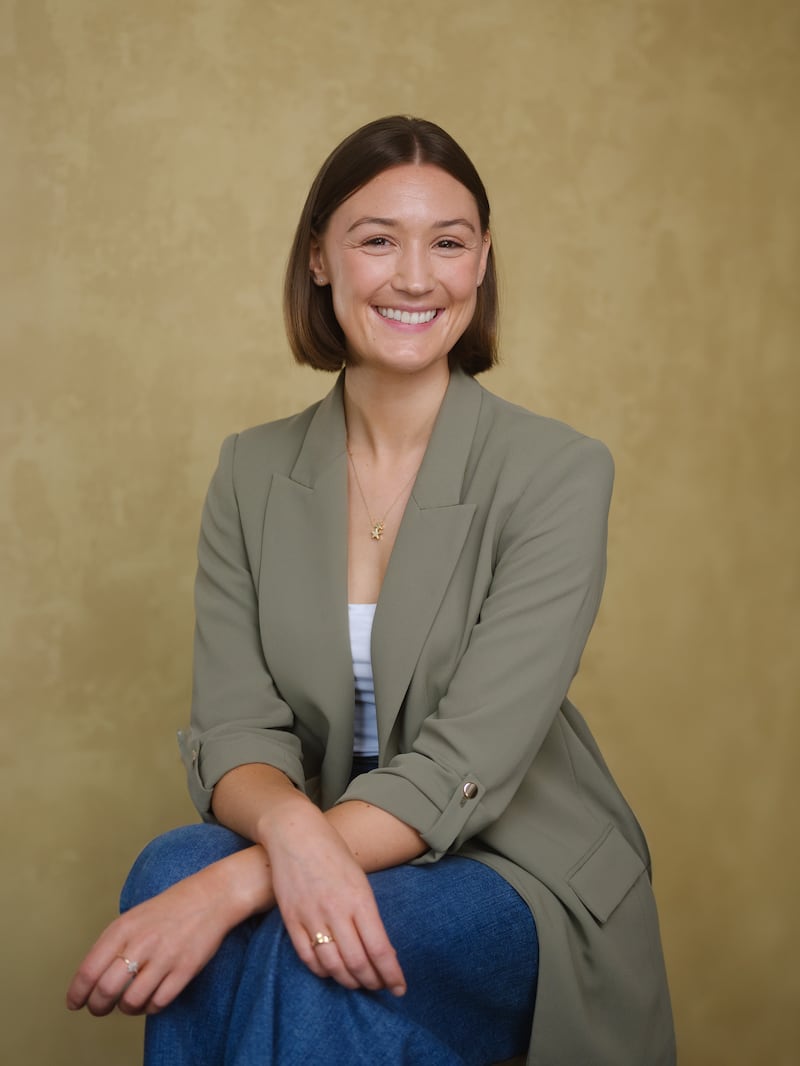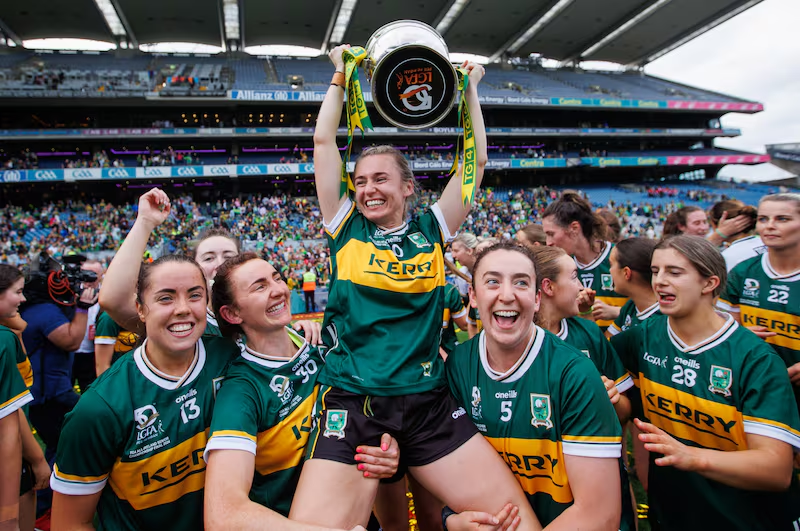When Hayley Kilgallon was 10 years old, she had no football team of her own to play on. Her brother, who is two years younger than her, was flat to the mat – under-8s, under-9s, no end of ball to play. But her club, St Mary’s in Sligo, didn’t have a team for girls until she reached under-12. In fact, when all came to all, the team she was on was the first-ever under-12 girls’ team in the club.
This sounds like it was a million years ago. It was not. Kilgallon is 29 so we’re only talking about the mid-2000s. Neither was it a particularly unique set-up for the time. The 2000s, as Kilgallon points out in her new book, Unladylike - A History of Ladies Gaelic Football, “was a period defined by growth and strategic planning”. The seeds of the rude health of women’s Gaelic football we see today were being sown there and then.
“I was at home recently and I was talking to our former chairman,” Kilgallon says. “He said at underage they’re pretty much running equal split boys and girls. They’re putting in multiple teams, which was never the case. We’d have been struggling sometimes to get a team together when I was younger.
“I think, looking back now, I think I was aware that it was a new thing for the club as well to be investing in ladies’ Gaelic football. But until I got to university and started researching the history of ladies’ Gaelic football, it hadn’t dawned on me that it was around for quite a while, but it was still catching up in so many ways. But I think change has finally happened, at that grassroots level anyway.”
READ MORE
The story of women’s Gaelic football is, in so many ways, the story of Irish society. The Ladies Gaelic Football Association (LGFA) is 50 years old in 2024 and Unladylike tracks that half-century assiduously, through its downs and its ups, its many false dawns and its modern, long overdue successes. Kilgallon is a PhD student in UCD, studying the history of women’s sport in Ireland, and she is a thorough and meticulous guide on the journey.
The book begins with a famous letter to the Sunday Independent, printed in August 1967. Apparently from the pen of an anonymous Cork farmer, it exhorted the GAA to do the right thing in advance of its upcoming big days out.

“Now that the All-Ireland finals are at hand again, let’s hope the GAA will bar women from attending these games, taking up valuable space,” he wrote. “To me, there is nothing more revolting or unnatural than to see a pleasure-bent woman up in the city for fun and enjoyment, instead of being satisfied with her lot at home. The GAA is a men’s organisation – for men only!”
Now, whether the bould farmer was in earnest – or indeed existed at all – has never been established. The Sunday Indo was able to print a full page of outraged replies the following weekend so it did them no harm – even in 1967, the holy grail of engagement was a prized priority. But what is clear is that he was writing at a time when women’s Gaelic football didn’t actually exist, not officially anyway.
The games of it that were played were to be found mainly at summer carnivals. Kilgallon found reports in local papers of novelty games of women’s football being played in places such as Athy, Co Kildare and across west Cork, on summer fare days alongside pram races and children’s fancy dress parades. Mad as it looks to modern eyes, those are the origins of the game we have today.
[ Women’s All-Ireland finals to take place on August Bank Holiday weekend next yearOpens in new window ]
“Yeah, it is shocking to look back on,” she says. “But that’s where they were able to make space for themselves to try it out. And so, while it’s still shocking, it was still really important for the growth of the game. And for it to take root.
“It seems that it developed quite quickly then. It wasn’t just a joke. Once they got out playing and showed that they should be able to develop it, then it changed into something a bit more competitive.”
It was – and has been – a grinding, inching process. Normalising women’s football, finding a niche, growing it out. The turbo-boost of the past two decades is a world away from what those early years were like. But at the same time, the latter wouldn’t be possible without the former.

“I’ve been thinking about this a little bit recently in context of my PhD research,” Kilgallon says. “Like, what was the LGFA’s success in the ‘70s and ‘80s? And I think it was that they managed to cement themselves and they didn’t fall away.
“It didn’t just turn out to be a bit of a phenomenon for a short period of time, but that they managed to cement themselves, offer more competitions, grow their membership at a time when they didn’t have that many resources. That was success for them.
“And you have to look at the wider economic and social conditions at the time. But then the ‘90s, I guess they were at a position maybe where they could actually target a bit more growth. They looked around at the counties that they hadn’t got ladies getting football in and actually supported them to get it going.
“They were looking strategically at different things, like getting Helen O’Rourke in as CEO. So they recognised that they were growing but they needed to grow more and they needed someone who was going to help them to do that. And they needed to be there full-time and then they needed to get television coverage.
“Television coverage is something they knew they needed for a long time. But they just had to consistently be knocking on their door to say, ‘Oh, no, come on, it’s about time. You can’t ignore us any longer.’ TG4 didn’t come on until 2001, but that seems to have been a hugely successful relationship for the two of them because TG4 was a new channel as well. They’ve got a lot of viewership from promoting ladies’ Gaelic football.”
As with her interest in football, Kilgallon’s history-buff journey started at home. Her dad is TJ Kilgallon, the cherry-picker Mayo midfielder from the 1980s. Her mam is Eileen Magnier, who for years was the northeast correspondent for RTÉ News. The house was full of books and boots and if you weren’t immersed in one, you were stuck in the other.

By the time she finished her Leaving Cert, history at UCD became the next step along the road. As the sort of person whose curiosity serves to remind her of all the things she doesn’t know, she found herself getting more and more drawn to the origin stories of women’s sport in Ireland. Unladylike deals exclusively with Gaelic football but her PhD thesis will go wider.
“When I first started the research as a master’s student, there was a little bit of embarrassment that I didn’t know about the history of the LGFA, whereas I knew a lot about the history of the GAA. I wanted to do this for myself because I don’t know anything about it.
“I guess with the PhD now, I want to add more to the field. There’s so much more you could write about women’s sport and the history of ladies’ Gaelic football. There’s so many ways you probably could have approached this book and so many more stories you could tell. Like, every year there seems to be another GAA book out about the history of the association.”
[ Kerry’s All-Ireland winning team all nominated for women’s All StarsOpens in new window ]
This is only a step along the road, of course. The LGFA’s half-century has come at a time when integration between it, the GAA and the Camogie Association is bubbling away. Of all the things that surprised Kilgallon during the research, the early days of that to-and-fro way back in the 1980s was something she was learning for the first time. And it gave her a new context for the modern uneasiness that exists.
“The relationship that the LGFA sought and the interactions they had in the ‘70s and ‘80s – the GAA were very much sceptical about it. So when you’re reflecting now on the talk about integration, you can see why the LGFA themselves are a bit sceptical about coming in under their wing. Because the scepticism was on the other side for so long and they weren’t maybe so supportive.”
It has changed and it will change because it must change. History never says otherwise.
– Unladylike: A History of Ladies Gaelic Football by Hayley Kilgallon is published by New Island Books
- Sign up for push alerts and have the best news, analysis and comment delivered directly to your phone
- Join The Irish Times on WhatsApp and stay up to date
- Listen to our Inside Politics podcast for the best political chat and analysis













